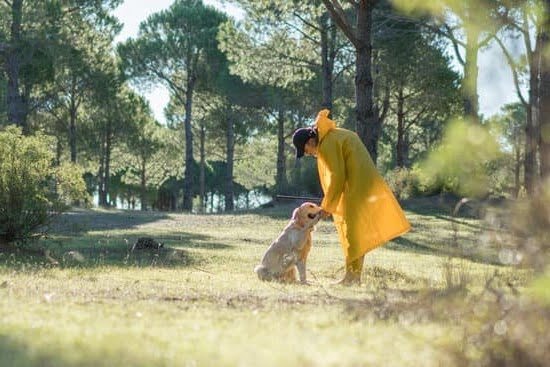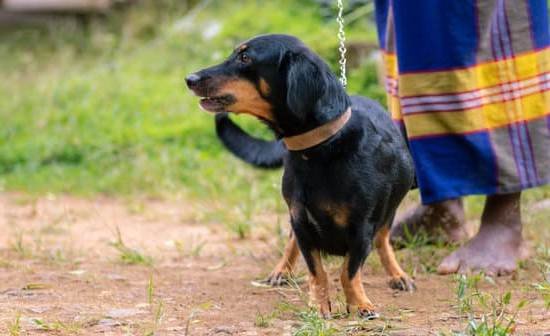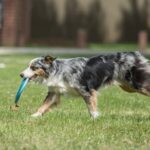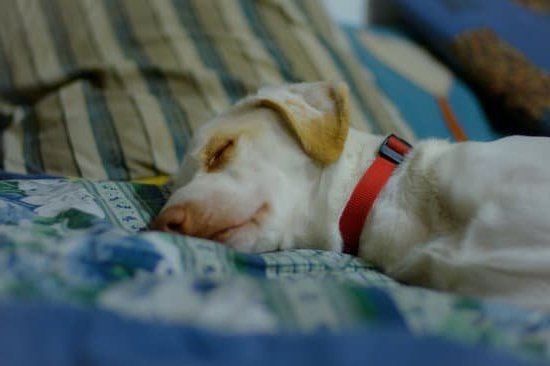Introduction
Potty-training your dog can have numerous benefits for you and your pet. Not only will it make housebreaking your dog easier, but it will also help to promote better overall hygiene inside the household. Furthermore, potty-training is essential in building a better relationship with your new pup. By taking the time to teach your pup proper toilet etiquette, they will be more likely to understand how to behave outside the home when on walks or visiting other places. Additionally, you are less likely to find yourself concerned with any messes or accidents inside of the home.
On top of that, potty-training can be a rewarding experience for both you and your pet. Teaching a new skill and seeing them succeed will bring about an immense sense of pride and accomplishment for all involved. As an added bonus, once successfully trained, most dogs learn quickly that using the bathroom outside is allowed – allowing you some extra freedom during those long outings away from home. Also, if properly taught, cleaning up after your four-legged friend may become a breeze as well! So grab those treats and get ready; with enough patience and consistency you’ll soon have a pooch who loves doing their business outside!
Understanding Your Dog’s Potty-Training Readiness
When your pup is ready to begin potty-training they may be exhibiting physical signs that they need to go outside, like sniffing around and whining. Your pup may also start to explore new areas of the house, which can be a sign that they are trying to find a place to go potty. It’s important when attempting to train your pup that you watch for these signs, so you can take them outside to do their business in an appropriate place.
Once you recognize the signs that your dog needs to go outside, it is important that you choose the right space for them. Puppies should never be allowed in areas where other animals may have gone before as young puppies won’t yet understand proper hygiene. Choose an area with grass or soil so it is easy for your puppy to dig and pick up on the scent of their pee or poo. During training, avoid cemented spaces such as patios or sidewalks since this space does not promote effective marking behaviors in pets.
The aim of potty-training is unlearning any previously established inappropriate habits from the home and replacing it with acceptable outdoor behaviors. To encourage good outdoor habits start by praising or reward your pup every time he/she goes outside for wearing toileting purposes by providing verbal praise or giving them treats as rewards after successful toilet trips outdoors. This technique should help teach your pup that going outside is a desirable thing and will help he/she obtain positive reinforcement while using the appropriate toileting spots in future visits outdoors
Developing a Potty-Training Routine
Establishing a potty-training routine is the first step in teaching your dog to go outside to potty. To make sure that your pup learns as quickly and efficiently as possible, start by setting a rigid schedule and regularly introducing them to the same designated potty area each time. Setting up a routine that is structured but also flexible enough to accommodate different weather conditions or any sudden changes your pup may experience, can help them understand the training more easily.
When first introducing your pup to the designated potty area, it’s important to keep training sessions short and successful until they get used to going there consistently. Start by taking them out for ten minutes every two hours (at least) during the day and then gradually increase the time if you see success in their behavior. Remember that small rewards such as treats or verbal praise should be given after each successful potty break! Additionally, providing outdoor playtime before taking them out to use the bathroom can encourage frequent trips outdoors so that they learn where it’s appropriate for them to eliminate.
Once trained properly, maintaining a regular potty-training schedule will become easier for both you and your dog – especially when reinforcement is provided every time they make it outside. Keeping an eye on their behavior throughout the day and committing some quality time outside with them will help ensure success!
Positive Reinforcement in Training
When it comes to training your dog to go outside to potty, positive reinforcement is the key. Positive reinforcement means providing rewards and encouragement when your dog performs a desired behavior. This creates an environment in which the dog learns that good things happen when they do the right thing – like going outside to potty!
One way you can use positive reinforcement is by offering verbal praise or a small treat immediately after your dog goes potty outside. You can also offer affectionate petting or playing with a toy after it finishes its business outdoors. Doing this consistently whenever your pup completes the task – regardless of how long it takes – can make potty training much easier and more successful for both of you!
You should also make sure not to punish your pup if they have an accident inside. Instead, by just quickly taking them outside immediately, you are teaching them where they need to go without creating a negative association with being scolded for accidents in the house. If you remain patient, consistent, and provide plenty of treats and rewards for good behavior, soon enough your pup will be going right to the back door every time it needs to go out!
Handling Accidental Setbacks
It is important to remember that even when mistakes happen and your dog makes an accident in the house, don’t resort to punishment. This will only cause confusion and can be detrimental to the progress you are making with your training. Instead, remain consistent in your training technique and provide positive reinforcement when they potty outside as normal, such as verbally praising them or giving them a treat. If possible, go back over the basics of where and how to potty so that your dog knows what behavior is expected of them. Be sure not to make it seem like a chore for either one of you so that the emotional connection between you two remains strong during this process as well.
Gradually Increasing Amount of Time Outdoors
As your dog’s potty training progresses, it is important to gradually increase the amount of time they spend outdoors. Start out by taking them outside for very brief intervals and increase the duration as their skills improve. Each day, spend a few minutes more outdoors than you did the day before, and then come back inside. Make sure to provide lots of praise and treats when they accomplish their task during each session. It may help to set a timer so that you can keep track of how long they have been away from home. Repeat this process until your dog has gotten accustomed to being outside for longer periods of time without needing to eliminate. Your pup will soon become comfortable going outdoors when needed!
Toys and Snacks
Using both snacks and toys as a reward for your pup can be an incredibly effective training tool. Snacks are ideal for providing a quick reward in celebration of good behavior. This reinforces your pup’s understanding that when they complete their task, they will be rewarded with something they love. Toys on the other hand provide an extended form of enjoyment following completion of their task. They can provide long-term satisfaction, with the pup excitedly expecting to enjoy the new toy or playtime once the job is done. Plus, the distraction it creates gives you time to reset expectations and command repetition as needed. Both toys and rewards are great methods for teaching your pup to go outside to potty – always be sure to give praise or have your pup do simple tricks during every successful relief session! Try encouraging them by saying “our goal is three bathroom trips outdoors today!” And remember – if at first you don’t succeed, try again tomorrow!
Overcoming Training Challenges
If you’re trying to train your dog to go outside to potty, it’s natural to experience some stalling of progress. Some dogs may take longer than others to properly learn the routine, making it important for pet owners to be patient and consistent in their training efforts. If your pet begins struggling or makes a mistake, try to remain calm and avoid punishing your dog for their missteps: instead, review what went wrong and how you can help set your pup up for success next time.
The best way to get back on track is through positive reinforcement- offer plenty of praise and rewards when your pup displays desirable behavior associated with going outside to potty. Additionally, ensure that they are familiar with the environment they should be using as their designated bathroom spot. Practice leaving the house together while encouraging good behaviors such as walking on a leash, making progress toward the destination spot and getting in position once enough have been reached. Through repetition and persistence, you will eventually be able to teach your pup the desired behavior.
In addition, if new obstacles arise that create difficulty in progressing further with training (such as fear of loud noises or unfamiliar environments), identify those problems so that we can address them head-on. This can be done by introducing an obstacle gradually at first (in an effort not to overwhelm or frighten the pup) before building upon it until a level of comfort is achieved – rewarding appropriate behaviors along the way! By problem solving through these challenges together, much more effective results can be achieved than simply punishing any mistakes that were made during the learning process.
Conclusion
Once you have successfully trained your dog to go outside to potty, you will begin to experience the benefits of this accomplishment. You will no longer have to clean up messes inside the house and all of the time and money that goes into that can be freed up. You will also have created a positive relationship with your beloved pet because it will now understand what is expected of them. This way, you get to spend more quality time together and create better communication between you. Also, since your pup is potty-trained, they will be better-prepared for any future trips or stays elsewhere that require proper toilet etiquette. Potty-training can be troublesome, but in the long-run it proves beneficial for both you and your puppy!

Welcome to the blog! I am a professional dog trainer and have been working with dogs for many years. In this blog, I will be discussing various topics related to dog training, including tips, tricks, and advice. I hope you find this information helpful and informative. Thanks for reading!





